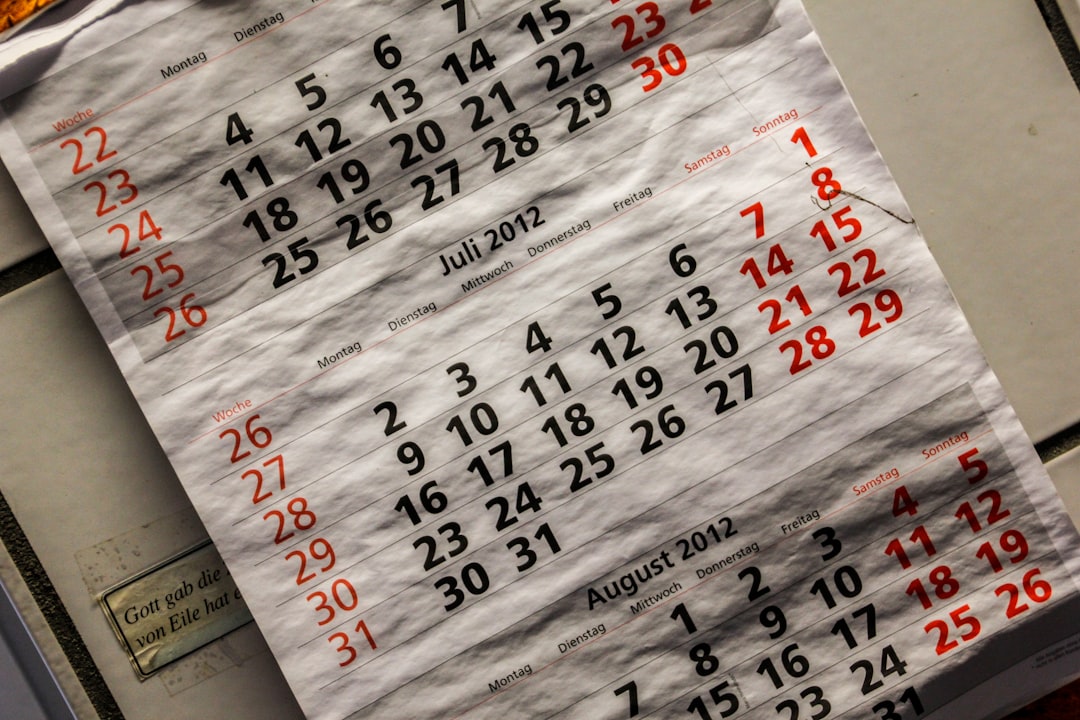How many hours are in a year? It’s a question that has been asked for centuries, and there is no one answer that fits everyone.
In this blog post, we will take a comprehensive look at time and how it is measured.
We will discuss different concepts related to time, including calendar years, seasons, months, weeks, days, hours, minutes, and seconds.
We will also explore ways to measure time and the history of timekeeping. So how many hours are in a year? Read on to find out!
Related: 25 an Hour is How Much a Year
Table of Contents
ToggleHow Many Hours Are in a Year?
In a Gregorian calendar year, there are 365.2425 days. This is because the Earth’s orbit around the sun actually takes 365.2422 days.
We use leap years every four years to make up for the inexact number of days in a year. In a leap year, February has 29 days instead of 28.
Leap years help to keep our calendar aligned with the Earth’s orbit. If we didn’t have leap years, eventually our calendar would be off by about 24 days!
In a common year, there are 365 days and in a leap year, there are 366 days. There are 24 hours in a day, so there are 365*24 or 8760 hours in a common year and 366*24 or 8760 hours in a leap year.
So there you have it! The answer to how many hours are in a year depends on what kind of year it is. If it’s a common year, there are 8760 hours, but if it’s a leap year, there are 8760 hours.
Read: How Much Money Is 6 Figures
How Many Minutes in a Year Are There?
A year is 365 days long, give or take a day. There are 24 hours in each day, meaning that there are 8,760 hours in a common year.
To find out how many minutes are in a year, you simply need to multiply the number of hours by the number of minutes in an hour.
As such, there are approximately 525,600 minutes in a common year. However, leap years are 366 days long, meaning that there are 8,784 hours in a leap year.
This means that there are approximately 527,040 minutes in a leap year.
Finally, a tropical year is 365.24 days long, meaning that there are 8765.82 hours in a tropical year. This means that there are approximately 525,949 minutes in a tropical year.
In conclusion, the number of minutes in a year depends on the length of the year itself.
Common years have approximately 525,600 minutes, while leap years have approximately 527,040 minutes.
Tropical years have approximately 525,949 minutes. However, all years have 24 hours in a day and 60 minutes per hour.
How Many Working Hours in a Year Are There?
For people who work 8 hours a day, there are 2,080 working hours in a year.
For those who work 6 hours a day, there are 1,560 working hours in a year. And for those who work 4 hours a day, there are 1,040 working hours in a year.
- There are 2,080 working hours in a year for the person who works 8 hours a day.
- There are 1,560 working hours in a year for people who work 6 hours a day.
- There are 1,040 working hours in a year for those who work 4 hours a day.
Assuming that an individual works every day of the week and takes two weeks off for vacation, this equals 52 weeks of work per year.
Therefore, 8 hours per day times 52 weeks per year equals 2,080 working hours in a year. For someone who works 6 hours per day, this would be 1,560 working hours in a year.
Lastly, for those who work 4 hours per day, this would be 1,040 working hours per year.
Related: The Most Expensive Thing In The World
Why is it Important to Know How Many Hours in a Year are Dedicated to Work?
The number of hours spent working each year can have a big impact on your career and earnings potential.
It’s important to know how many hours you’re working so that you can budget your time effectively, set expectations with your employer, and negotiate for raises and promotions.
Here are a few reasons why it’s important to know how many hours you’re working each year:
Knowledge is power
The more you know about your work schedule, the better equipped you are to manage your time and career.
Budgeting
Having a clear understanding of how many hours you work each year can help you budget your time (and money) more effectively.
Setting expectations
If you know how many hours you should be working, you can set realistic expectations with your employer. This can help prevent burnout and conflict down the line.
Negotiating raises
Knowing how many hours you work can also be helpful when negotiating for raises and promotions. If you feel like you’re being underpaid, having specific data to back up your claim can be very persuasive.
In Summary
Most people are well aware that there are 365 days in a non-leap year and 366 days in a leap year.
What many people do not know, however, is that there are actually 8,760 hours in a non-leap year and 8,784 hours in a leap year.
This works out to approximately 525,600 minutes in a non-leap year and approximately 527,040 minutes in a leap year.
The reason for the difference is that there are 24 hours in a day, and there are 60 minutes in an hour.
However, there are Leap years every four years to account for the fact that it actually takes 365.24 days to orbit around the sun.
Without leap years, our calendar would eventually become out of sync with the seasons. As a result, the Gregorian calendar – which is the calendar used by the vast majority of the world today – includes an additional day every four years.
This extra day accounts for the fact that it actually takes 365.24 days to orbit around the sun.
As a result, the Gregorian calendar is more accurate than calendars that do not include leap years.
How About Working Hours?
For the person who works an average of 8 hours a week, every weekday, with weekends off, there are 2040 working hours per year.
This is based on an assumption of 52 weeks of work per year and 40 hours worked per week.
However, it is important to note that this is only an estimate, as the actual number of working hours may vary depending on individual circumstances.
For example, some people may work more or less than 40 hours per week, and some may take additional time off for vacation or sick days.
In addition, some jobs may require shift work, which can further complicate the calculation.
As a result, the best way to determine how many working hours there are in a year is to consult with your employer or the human resources department.
Read: How to Buy SafeMoon on BitMart
FAQ About How Many Hours in a Year
How many hours does 1 year have?
There are a variety of ways to measure the amount of time in a year. The most common method is to use the Gregorian calendar, which most of the world follows.
On this calendar, a typical year is 365 days long, or 8760 hours. Every four years, an extra day is added to the calendar in order to account for the discrepancy between the Earth’s orbit around the sun and the calendar year.
This results in a leap year, which is 366 days or 8784 hours long. Although there are other calendars in use throughout the world, the Gregorian calendar is by far the most common, making it the standard when measuring a year’s worth of time.
How much are 2500 hours?
Since there are 24 hours in a day, 2500 hours is equivalent to 104 days and 4 hours.
2040 hours, on the other hand, is the average number of working hours per year for those who work 8 hours a day, 5 days a week.
This amounts to 85 days a year. So, in terms of time, 2500 hours is nearly two months longer than the standard work year.
Depending on how you use your time, this could be considered a significant amount of time.
For example, you could use 2500 hours to train for and run a marathon, learn a new language, or start and grow a small business.
Alternatively, you could spend that time watching TV, sleeping, or browsing the internet.
It all depends on how you choose to use your time. But no matter how you spend it, 2500 hours is definitely a significant chunk of time.
How many hours are in a week?
There are a total of 168 hours in a week. This is the standard length for weeks and remains constant despite the number of days in a year.
Of those 168 hours, the majority are typically dedicated to working. A standard workweek is eight hours a day, five days a week, totaling 40 hours.
This leaves 128 hours unaccounted for in a given week. However, these hours are not necessarily free time.
Many people use some of this time for commuting, eating, sleeping, and taking care of personal needs, such as hygiene.
Other common activities include watching television, socializing, and doing chores around the house. As such, while there are 168 hours in a week, not all of them are free time.
How many hours are in a month?
There are just over 730 hours in a month on average. This number can vary slightly depending on the length of the month – as some months have 30 days, some months have 31 days, and February changes depending on whether it’s a leap year or not.
However, on average, there are 730 hours in a month. Of those 730 hours, 168 are typically spent working – that is, eight hours a day, five days a week.
Of course, how many hours in a month are spent working depends on how many hours you work per day.
If you work more or fewer hours per day, or if you take more or fewer days off per week, then the number of hours you work in a month will differ.
Nevertheless, on average, there are 168 working hours in a standard work month.
Why did we switch from the Julian to the Gregorian calendar?
The Julian calendar was introduced by Julius Caesar in 45 BCE, and it remained the standard calendar in most of Europe for over 1500 years.
However, it was gradually replaced by the Gregorian calendar, named after Pope Gregory XIII, who introduced it in 1582.
The primary reason for the switch was that the Julian calendar did not accurately reflect the length of the tropical year, which is the time it takes for the earth to complete one orbit around the sun.
As a result, the seasons gradually shifted out of alignment with the Julian calendar, leading to confusion and errors in agricultural and religious festivals.
The Gregorian calendar addressed this problem by introducing a system of leap years, in which an extra day is added to the calendar every four years.
This has helped to keep the seasons aligned with the Gregorian calendar, and it remains the standard calendar in use today.
Can you have a negative number of hours in a day?
No, you cannot have a negative number of hours in a day. The day is defined as the time it takes for the earth to complete one rotation on its axis, which is equal to 24 hours.
As such, it is not possible to have a negative number of hours in a day. However, it is possible to have a negative number of hours in a year.
This can happen if you travel eastward across the International Date Line – as you effectively lose a day in the process.
As such, it is possible to arrive at your destination before you departed, resulting in a negative number of hours between your two points in time.
But it is not possible to have a negative number of hours in a day.
How many seconds are there in an hour?
There are 3600 seconds in an hour. This means that there are 60 seconds in a minute, and 60 minutes in an hour.
The relationship between these units of time is known as the sexagesimal system, which is used in a variety of applications, including telling time and measuring angles.
The sexagesimal system is believed to have originated in ancient Sumeria, and it was later adopted by the Babylonians and the Egyptians.
It eventually spread to other cultures, including the Greeks and the Romans, and it is still used in many parts of the world today.
So there are 3600 seconds in an hour, 60 seconds in a minute, and 60 minutes in an hour.
How many days are in a year?
There are 365 days in a year on the Gregorian calendar – which is the most widely used calendar in the world.
However, there are 366 days in a leap year – which occurs every four years.
The extra day is added to the calendar in order to keep the seasons aligned with the Gregorian calendar.
without this adjustment, the seasons would gradually shift out of alignment with the calendar over time.
As such, there are 365 days in a year on the Gregorian calendar, and 366 days in a leap year.
What is a day?
A day is defined as the time it takes for the earth to complete one rotation on its axis – which is equal to 24 hours.
This unit of time is used to measure the length of time between two points, and it is the basis for the calendar.
The day is a fundamental unit of time, and it is used in a variety of applications, including telling time and measuring the length of a year.
So a day is equal to 24 hours, and there are 365 days in a year on the Gregorian calendar.






